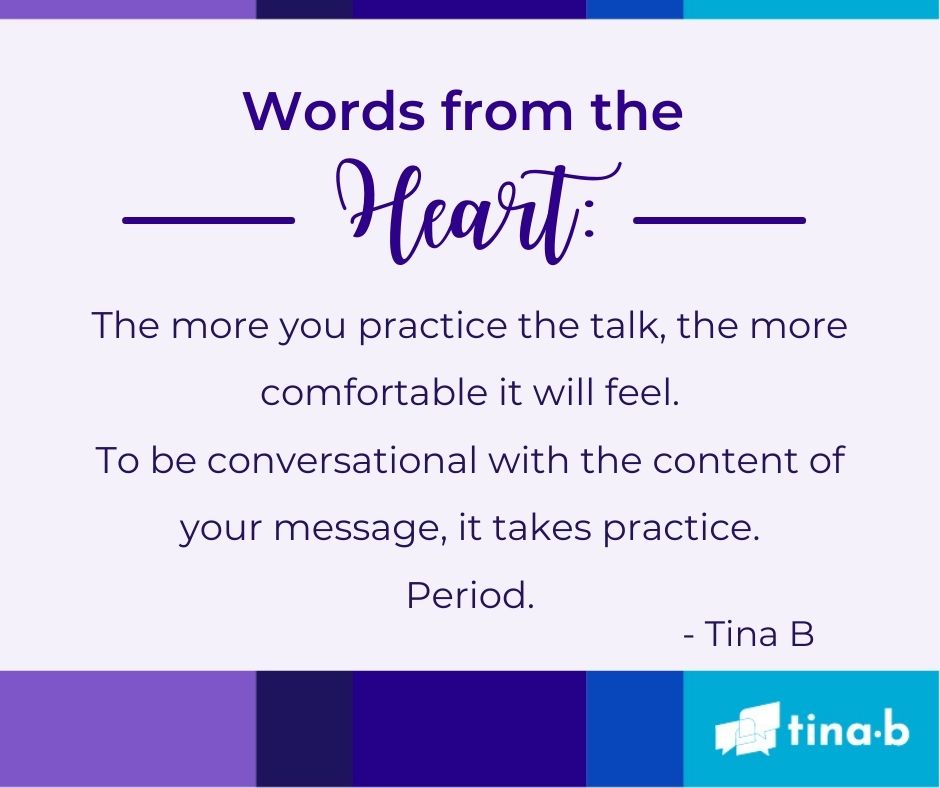Practice, More Practice, and Practice Some More
You’re asked to speak.
What’s your first step?
Depending on the context, the type of talk matters, and all speeches take practice.
Which type of speech challenges you most?
Memorized: a speech that is recited from memory rather than read from cue cards or notes
Manuscript-style: reading a fully scripted speech
Extemporaneous delivery: thoroughly prepared and planned but not memorized
Impromptu a speech delivered spontaneously or on the spur of the moment without preparation
As a public speaking coach, I encourage clients to present in the extemporaneous style. In the world of TED talks, organizers expect you to not only invest months in crafting and preparing your talk but also having it memorized.
Memorizing material frightens my clients the most.
They’ve said: “I can’t memorize.”
“I’m too old to memorize.”
“What if I mess up?”
How do you memorize a talk?
- Prepare months in advance.
- Practice in a variety of ways.
- Say the speech in its entirety aloud multiple times daily.
- Present it to a group of friends or family.
- Practice troubled spots multiple times.
- Practice parts of your speech in conversation.
- Record yourself speaking and say the speech aloud.
- By saying it, hearing, and sharing it in conversation with others, you’ll be amazed how the content of the message sticks and is top of mind.
How do you make a memorized speech sound less rehearsed and more conversational?
Practice.
Practice.
More practice.
Brain scientist Jill Bolte Taylor was said to have practiced her TED talk 200 times before delivering it.
If you have a burning desire to share your message and don’t know how to start, join me in my private Facebook group for my free workshop:
5 Days to Become a Magnetic Speaker,
April 18-22, 11-noon pm CST
in my private Facebook Group: Uplevel Your Speaker Style.
SAVE THE DATE!
June 3rd 10am-noon CST
Webinar with Tina B: The Power of Story: Clarify Context and Craft Content for Your Story.



